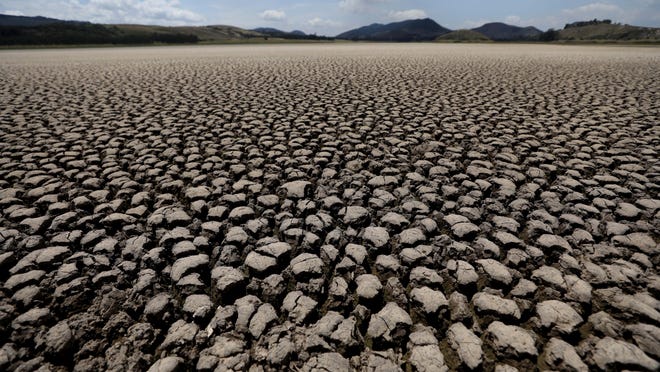Texas Gov. Greg Abbott declared a disaster Tuesday for stretches of Texas after rare and intense flooding caused widespread damage and left at least one person dead.
Floodwaters and severe storms in several north Texas counties caused “widespread and severe property damage, injury, and loss of life,” Abbott’s declaration says. More than 100 homes were damaged by flooding, he noted at a Tuesday press conference
Heavy rains across the drought-stricken Dallas-Fort Worth area Monday caused streets to flood, submerging vehicles as officials warned motorists to stay off the roads and water seeped into some homes and businesses.
A woman was killed in the Dallas suburb of Mesquite when flood waters from South Mesquite Creek swept her vehicle from a highway, officials said.
Jolene Jarrell, 60, was driver for Uber and was on her way home from dropping off a passenger when floodwaters swept her vehicle away, officials told according to NBC 5. She was on the phone with her husband of 20 years and could feel the water pushing her car. Jarrell said the water started leaking into her car, her family told authorities. It was up to her knees before the call disconnected, NBC 5 reported.
“She felt like she was being pushed, like someone was pushing her, which was the water pushing her along,” Mesquite Police Lt. Brandon Ricketts told NBC News. “You don’t realize how little water it takes to lift a vehicle and put you out and then it’s too late.”
WORSENING DROUGHT:The intense dry spell in the West is worst ‘megadrought’ in 1,200 years, new study says
MORE:At least 1 dead as heavy rain floods streets across Dallas-Fort Worth area
The Dallas region is the latest area to suffer intense and deadly flooding while in the middle of a drought this summer in a series of extreme weather whiplash events, likely spurred by human-caused climate change, scientists say.
The St. Louis area and 88% of Kentucky early in July were considered abnormally dry and then the skies opened up, the rain poured in biblical proportions, inch after inch, and deadly flooding devastated communities. The same thing happened in Yellowstone in June. Earlier this month, Death Valley, in a severe drought, got a near record amount of rainfall in one day, causing floods, and is still in a nasty drought.
“So we really have had a lot of whiplash,” said Kentucky’s interim climatologist Megan Schargorodski. “It is really difficult to emotionally go through all of these extremes and get through it and figure out how to be resilient through the disaster after disaster that we see.”
In just two weeks in late July and early August, the U.S. had 10 downpours that are only supposed to happen 1% of the time — sometimes called 1-in-100-year storms — calculated Weather Prediction Center forecast branch chief Greg Carbin. That’s not counting the Dallas region, a likely 1-in-1,000-year storm, where some places got more than 9 inches of rain in 24 hours ending Monday with several inches more forecast to come.
More:In California’s water crisis, neighbors turn in neighbors and even celebrities aren’t spared
More:Fifth set of skeletal remains found at Lake Mead after Western states hit with drought-inflicted water cuts
“These extremes of course are getting more extreme,” said National Center for Atmospheric Research climate scientist Gerald Meehl, who wrote some of the first studies 18 years ago about extreme weather and climate change. “This is in line with what we expected.”
Weather whiplash, “where all of a sudden it changes to the opposite” extreme, is becoming more noticeable because it’s so strange, said climate scientist Jennifer Francis of the Woodwell Climate Research Center in Falmouth, Massachusetts.
When the ground is so hard from drought, water doesn’t seep in as much and runs off faster in flood, Francis said.
In the U.S., many of the big heavy summer rains are traditionally connected to hurricanes or tropical systems, like last year’s Hurricane Ida that smacked Louisiana and then plowed through the South until it flooded the New York, New Jersey region with record rainfall rates.
But this July and August, the nation had been hit with “an overabundance of non-tropical related extreme rainfall,” the National Weather Service’s Carbin said. “That’s unusual.”
Contributing: Ashley R. Williams, Cady Stanton, USA TODAY; Associated Press


